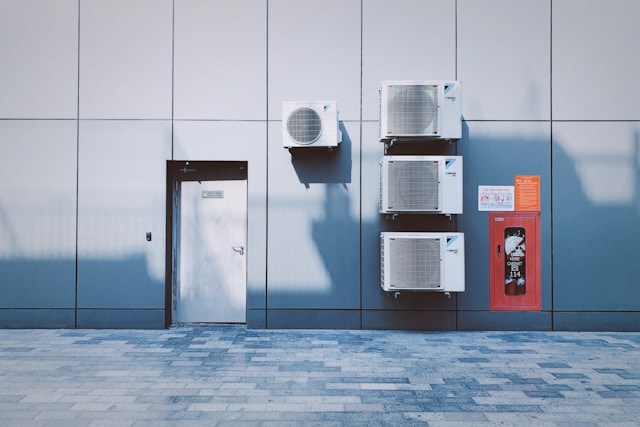Follow Us x
Understanding HVAC Efficiency Ratings: What SEER, AFUE, and HSPF Mean for Your Home
May 26, 2025Understanding HVAC efficiency ratings like SEER, AFUE, and HSPF is essential for making informed decisions about home comfort and energy use. These standardized metrics allow you to compare systems based on how effectively they heat or cool your home while minimizing utility costs.
In this guide, you’ll learn what each rating means, how they differ, and how to apply them when evaluating HVAC systems for your home.

The Role of Efficiency Ratings in HVAC Performance
HVAC systems are a major part of a home’s energy consumption. Efficiency ratings help determine how well these systems perform relative to the energy they consume. The three primary ratings to understand are:
- SEER (Seasonal Energy Efficiency Ratio) for cooling
- AFUE (Annual Fuel Utilization Efficiency) for heating
- HSPF (Heating Seasonal Performance Factor) for heat pumps
Each of these ratings offers insight into how efficiently the system converts energy (whether fuel or electricity) into heating or cooling. The higher the rating, the more efficient the system and the lower your potential energy costs.
SEER: Seasonal Energy Efficiency Ratio Explained
SEER measures the cooling efficiency of air conditioners and heat pumps over an entire cooling season. It’s calculated by dividing the total cooling output in BTUs by the total energy consumed in watt-hours. A higher SEER rating indicates a more efficient system.
As of 2023, the Department of Energy introduced updated testing protocols known as SEER2. These new standards provide a more accurate reflection of real-world performance by accounting for factors like airflow resistance in ductwork.
Current regional SEER2 minimums:
- 14.3 in northern states
- 15.2 in southern states
Choosing a system with a higher SEER2 rating can lead to significant savings over time, especially during hot, humid summers where cooling demand is high.
AFUE: Understanding Furnace Efficiency
AFUE stands for Annual Fuel Utilization Efficiency. It measures how efficiently a furnace or boiler converts fuel into usable heat over the course of a year.
For example:
- A furnace with an AFUE of 90% converts 90% of fuel into heat.
- The remaining 10% is lost through exhaust or inefficiencies.
Typical AFUE ranges:
- Standard efficiency: 80% (minimum allowable)
- Mid-efficiency: 90% to 93%
- High-efficiency: 94% to 98.5%
In colder climates, choosing a higher AFUE furnace can provide long-term savings and reduce your environmental footprint. It also aligns with current energy-efficiency goals that focus on lowering heating costs and reducing fuel waste.
HSPF: Measuring Heat Pump Performance
HSPF, or Heating Seasonal Performance Factor, evaluates how efficiently a heat pump heats your home over a typical season. It’s calculated by dividing the total heating output (in BTUs) by the electricity consumed (in watt-hours).
A higher HSPF rating means the heat pump delivers more heat for less electricity. This can translate to lower winter energy bills and less strain on your utility usage.
As of 2023, the DOE introduced HSPF2 standards:
- 7.5 minimum for split-system heat pumps
- 6.7 minimum for packaged units
When selecting a heat pump, pay close attention to HSPF2 ratings. Systems that exceed these minimums are not only more efficient but often eligible for rebates and incentives. If you’re aiming for year-round performance from one unit, prioritizing both SEER2 and HSPF2 ratings is key.
How to Apply Ratings When Choosing a System
Knowing what SEER, AFUE, and HSPF mean is just the start. To make the most of these metrics, apply them to your own home’s layout, climate, and usage habits.
SEER / SEER2 for Cooling Efficiency
- Prioritize higher SEER2 ratings if you live in a hot, humid region.
- Higher ratings often cost more upfront but pay off in energy savings.
AFUE for Heating Efficiency
- Look for a high AFUE if your winters are cold or prolonged.
- A 95%+ AFUE model can significantly lower fuel usage over time.
HSPF / HSPF2 for Heat Pumps
- Ideal for homes that rely on electric heating.
- Combined with SEER2, a high HSPF2 ensures strong seasonal performance in all weather.
System Type Matters
- Furnaces: Focus on AFUE, especially in gas- or oil-heated homes.
- Heat pumps: Look at both SEER2 and HSPF2.
- Air conditioners: SEER2 is your primary efficiency indicator.
Regional Considerations
For example, in South Carolina’s mixed climate, homeowners benefit from a balance of high SEER2 and AFUE ratings. This ensures year-round efficiency, from hot summers to cooler winters.
If you’re comparing energy-efficient HVAC systems in South Carolina, consider consulting a qualified HVAC technician who understands regional standards and system performance across seasons.
Efficiency vs Cost: What to Prioritize
While high-efficiency systems typically cost more upfront, they often provide lower operational costs over time. Here’s how to balance:
- Short-term budget: Mid-range SEER2 and AFUE can offer decent performance without the premium price tag.
- Long-term savings: Opt for the highest efficiency ratings within your budget, especially if you plan to stay in your home long-term.
- Maintenance access: Higher-rated systems sometimes require more advanced maintenance, so consider local service availability.
Also factor in local incentives, utility rebates, or tax credits, which can offset the cost of installing high-efficiency systems.
Conclusion
Understanding SEER, AFUE, and HSPF ratings gives you the tools to select HVAC equipment that meets your home’s specific needs while minimizing energy consumption and utility costs.
- SEER and SEER2 focus on cooling efficiency
- AFUE measures fuel-to-heat conversion for furnaces
- HSPF and HSPF2 assess heat pump heating performance
Choosing the right system involves balancing efficiency, cost, and local climate needs. By applying these ratings thoughtfully, you can reduce your energy use, improve home comfort, and make smarter HVAC investments.
